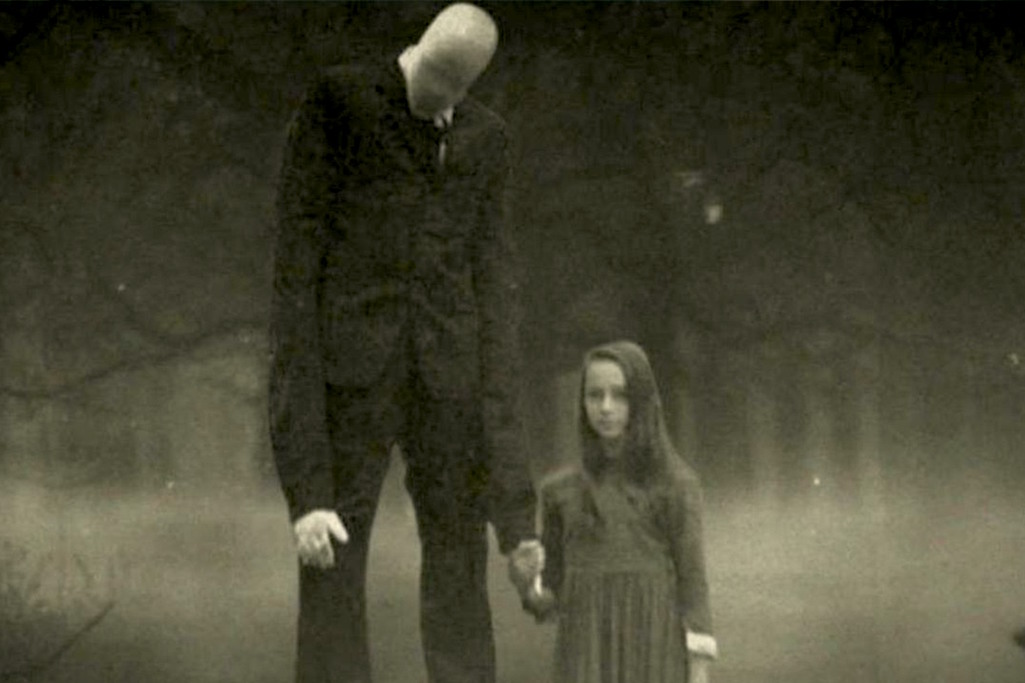‘Beware The Slenderman’ Review: Don’t Believe Everything You Read Online
This HBO doco weirdly feels more relevant than ever.

Could there be a more unsettling cultural climate for the release of a film about the Slenderman?
Politicians and IRL people are drastically divided, with each side sticking with the boogeymen they choose to invest in. At a time when Steve Bannon, email servers, the Kremlin, climate change, religious expression, “bad hombres” and voters (for president and/or the Oscars) are equally as terrifying and distrustful depending on who you ask, perhaps the most relatable story is the one about two young girls who placed too much stock in the stories they read online.
“I just know what the internet has told me.” These are the words of Anissa Weier (and also kind of Donald Trump) who, when she was 12 years old in 2014, joined her friend Morgan Geyser in hatching a plot to act as a “proxy” for an internet urban legend by stabbing their school friend Payton Leutner 19 times with a thin knife.
Afterwards, the girls claimed they needed to sacrifice “Bella” (as they called Payton) to keep the monster from killing their family, so they left her for dead in the woods near Morgan’s house in Waukesha, Wisconsin. By the time the seriously injured Payton dragged herself to a road and flagged down a cyclist for help, Morgan and Anissa were miles away, walking towards Nicolet National Forest where they believed the Slenderman would be waiting for them. Whether he would spare, welcome or harm them when they arrived changed depending on which website, or girl, is telling the story.
Much of Irene Taylor Brodsky’s new HBO documentary, Beware the Slenderman, is spent dissecting the persistence of the Slenderman meme. The film unpacks how it metastasised across the internet, from its origins in a 2009 Photoshop competition on the website CreepyPasta, to the Minecraft video where Anissa first discovered it. Slenderman may have been disseminated through the bowels of the internet, but as Brodsky’s film details, the concept of an outsider-figure with an ability to lure, protect and threaten children is not a new one. There’s a brilliant scene in the film that contrasts the bizarre magnetism that pulls kids towards Slenderman to the centuries-old story of Hamelin’s Pied Piper, who transfixed the town’s children and disappeared along with them.
“He’s everywhere,” Morgan told a police detective in her video statement — much of which makes it into the film, as does Anissa’s statement. Both girls downplay their agency in the attack, and shift blame (or should that be, give credit?) to the other for masterminding the operation. Morgan was the one who drove the knife into her friend at Anissa’s encouragement, but during Anissa’s testimonial, she distances herself from the attack. She tells the detectives that she no longer believes in “Slender”, as the girls often referred to the creature: “Beforehand, I believed. Now I know it’s just teenagers who really like scaring people and making them believe false things”.
The question that viewers who followed the case closely will likely want answered is about how much of that blame can be placed on such young people who believe so easily. What they did was gruesome, sure, but they were children — easily influenced and verging on brainwashed — when they did it. Surely the internet — that amorphous enemy of well-meaning parents — should take some of the blame?
It’s parents — the ones of Anissa, Morgan and Payton, and the ones watching this story unfold — who will likely be most rattled by the effect YouTube and somethingawful.com had on these girls. In the film, Anissa’s dad describes the limits and supervision he enforced around his daughter’s computer time. He wonders how he can protect his younger son from a classroom fitted out with iPads. Is technology to blame, or kids’ access to it, or kids’ eagerness to believe and connect?

The premeditated aspect of the crime saw Morgan and Anissa tried as adults, rather than as juveniles, and much of Beware the Slenderman is occupied with both their legal defense attempting to reverse this decision – if tried as adults, they could face up to 45 years in prison – and with Morgan’s diagnosis of schizophrenia. Brodsky leaves the final judgment for the viewer on whether one or both of girls is deserving of a punishment that is at once both severe and appropriate.
But, despite the terrifying and gruesome subject matter, Beware the Slenderman is a documentary that fails to spook or even chill. It focusses so much on the legal proceedings and psychological evaluations that happened after Morgan and Anissa were found that day in 2014, that the crime itself feels somewhat distant. If you want a truly haunting rundown of the case, you’ll find it in Lisa Miller’s comprehensive account on ‘Daily Intelligencer’. The film makes attempts at eeriness, by relying on twinkly piano music and a soft girl’s voice narrating scenes, but it refrains from going for the full fright, even when that narration is of a poem about stapling a corpse to a tree.
The film’s title is ultimately a red herring because the scariest thing about the Slenderman stabbing is the fact that it’s so filled with potential. Every day that young white men become radicalised as a result of the fear-mongering they ingest on Twitter, a story about two girls who got scared by something they saw online and believed in that fear over their better judgment feels all the more prescient.
Thousands — if not millions — of people had read about or seen pictures of the Slenderman before Anissa and Morgan did, but they weren’t motivated to behave in the same ways the girls did. Because just like paintings or movies or songs, when you encounter something scary, you have the power to decide how it affects you. For Morgan and Anissa – two outcasts who saw a chance to impress both one another and a cool, terrifying creature — they decided to invest everything that they were already afraid of into what the rest of the world dismissed as myth.
–
Beware The Slenderman is available to stream on Foxtel Go now.
–
Brodie Lancaster is a writer and editor from Melbourne. She edits Filmme Fatales, a zine about women and cinema, and has contributed to Rookie, Rolling Stone, Vulture and Pitchfork. She is a senior editor at The Good Copy and a mediocre DJ.


